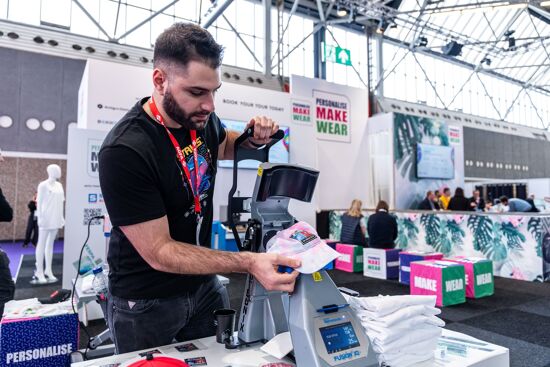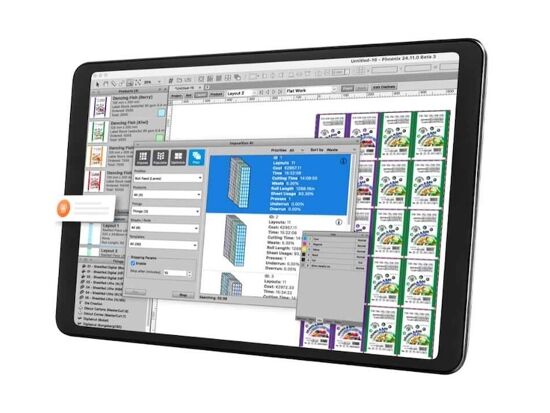HP upgrades its Latex range
HP used its appearance at FESPA 2017 to launch two mid-range Latex printers as well as a series of enhancements to its PageWide printers and an automated feeder for its flagship HP Scitex 17000.
The new 180sqm/hr 3.2m-wide HP Latex 3600 and 3200 offer the headline speeds and image quality as the 3500 and 3100 machines they replace, but due to a significant number of enhancements they offer a 30% productivity boost on the old machines.
“A lot of the focus was based on improvements requested by customers. Some of the very heavy installations, where customers are producing huge volumes, gave us a lot of good feedback,” said Michael Smetana HP head of marketing, Graphics Solutions Business EMEA.
“With these new machines, we are reinventing the mid-volume portfolio.”
New features on the six-channel machines include a special tiling mode, offering full colour consistency for tiled jobs and reduced media wastage when changing media type. The company has also further enhanced ease of use and automation, which means one operator can now comfortably operate up to four of the roll-to-roll devices.
HP has also improved the 3600’s ability to run overnight by beefing up the roll feed mechanism so that it can handle single rolls up to 300kg or two 200kg rolls and enlarging the ink tanks to 10 litre. Both devices also feature a new automated printhead maintenance routine.
Both also now feature HP Service Centre, which analyses live data to predict technical issues and minimize downtime.“All of these combined means the machines can truly run 24/7 if you want them to, because we have enhanced uptime and performance” said Smetana.
The superseded 3100 and 3500 machines are field upgradable to the new 3200 and 3600 specifications respectively.
HP was also using FESPA to launch a flexible media loading kit for its flagship HP Scitex 17000 industrial flatbed. The upgrade enables fully automated loading of material from 115gsm up to corrugated board.
The company was also demonstrating an expanded HP PrintOS, it’s cloud-based operating system originally developed for Indigo machines, which is now compatible with the Latex and Scitex machines.
As well as a number of software enhancements for its PageWide XL portfolio, which it dubs ‘advanced suite’, including a one-click print function for common formats, HP Click, the company was also showing a new entry-level inline folder for its PageWide XL 4000/4500 and XL 5000 machines at FESPA 2017
Its booth was also used for the European launch of its new Print and Cut range, which was announced in April, as well as the launch of an extended range of HP accredited soft-signage substrates.
Topics
Interested in joining our community?
Enquire today about joining your local FESPA Association or FESPA Direct
Recent news

Special Effects in DTF Will Make Your “Prints” More Memorable
The DTF market is expanding with new vendors and innovations like multi-head printers enabling diverse ink options (spot, neon). Decorative films offer streamlined special effects. Keypoint Intelligence tested metallic and glitter films, noting varied ease of use and wash durability. New technology using adhesive and foil directly promises further creative advancements in DTF.

SmartHub – Expectations, opportunities and why you should attend!
The SmartHub at Personalisation Experience 2025 in Berlin will showcase personalisation and smart production opportunities across industries like textiles. Featuring a Smart Factory Trail with brands like Inkcups and Trotec, and a conference with experts discussing AI, mass customisation, and profit strategies, it offers insights into reducing waste and boosting efficiency through digital methods. Panel sessions will explore growth, automation in textiles, and smart manufacturing.

How is AI revolutionising Large Format Print?
Nessan Clearly discusses how AI in print relies on data pattern matching, already enhancing software for large format providers. He predicts that this will result in increased AI integration in workflow planning, job queue management, colour correction, image upscaling, and predictive maintenance via sensors and vision systems, ultimately streamlining operations and offering greater flexibility.
.png?width=550)
Why are FESPA events the ideal place for visionaries to meet? With Harold Klaren from EFKA
We speak to Harold Klaren, International Sales Manager at EFKA about visionaries in print. Harold shares why he believes FESPA events are the ideal place for visionareis to meet.